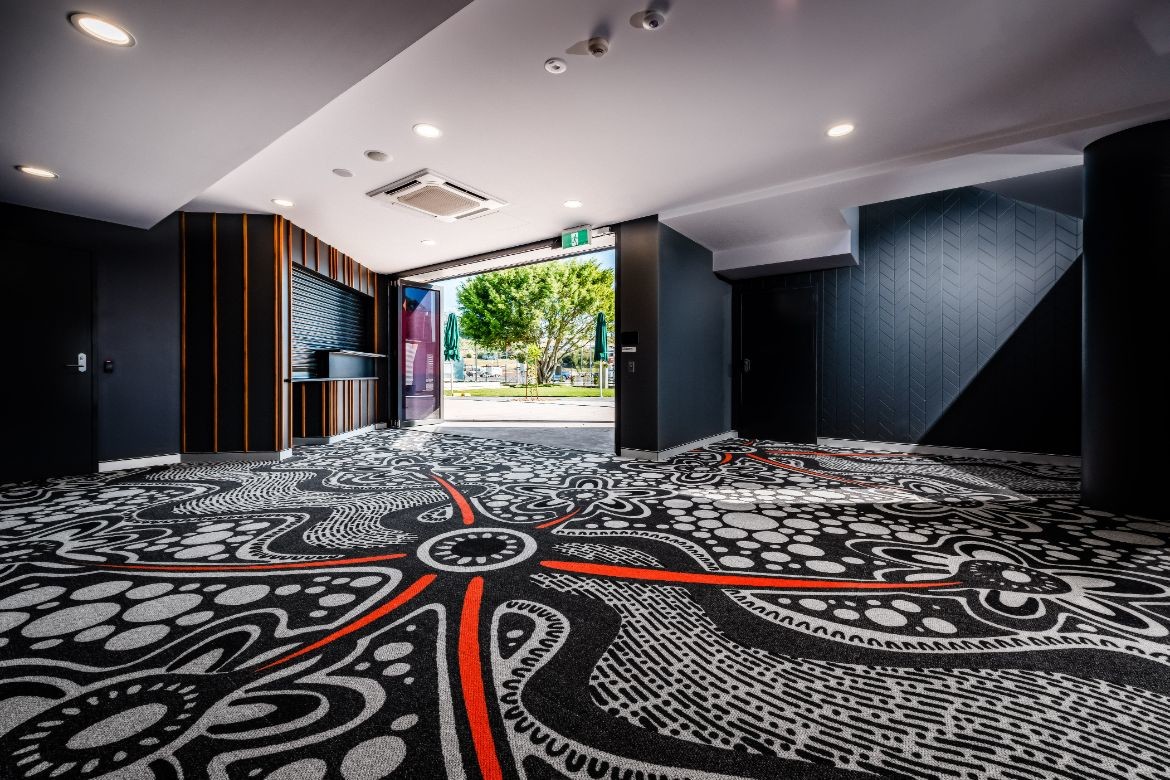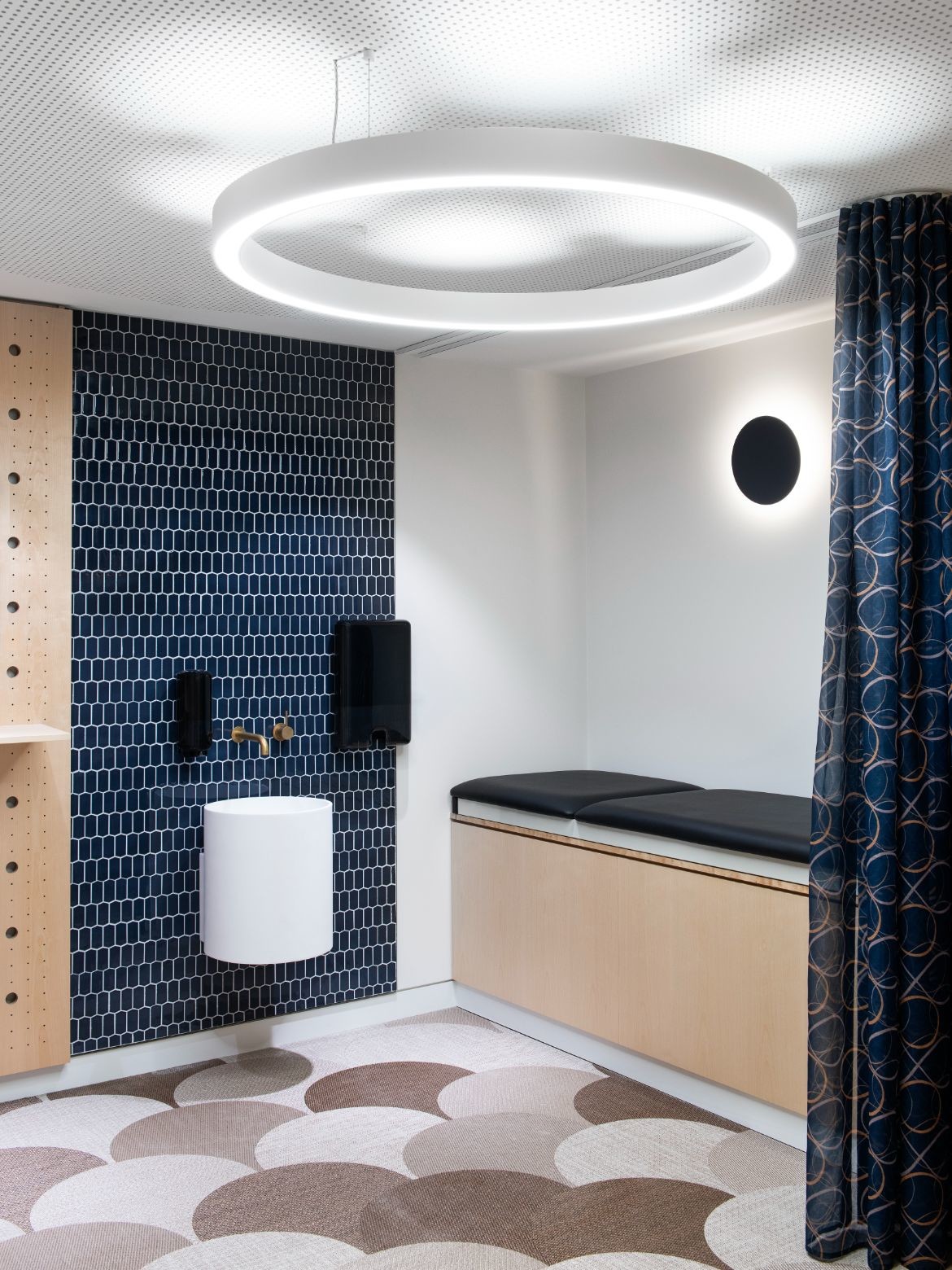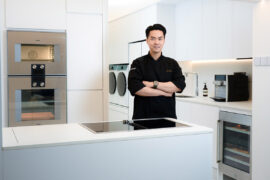How is the horizontal plane rising up to meet complex needs within health, wellbeing and sustainability? We discuss colour, texture, environmental credentials and the influence of materiality on the wellbeing with four globally leading carpet manufacturers.

This image and below, Oceanic Collection from GH Commercial.
February 1st, 2023
Flooring and carpet choices have always considered durability, particularly in demanding high-traffic spaces, but according to GH Commercial’s Joel Williamson, we have seen a shift in thinking. This started pre-pandemic but has been accelerated throughout the past two years by all the changes that have been happening in the workplace, how we travel, how we care for people and how we relax.
The push for transparency among carpet manufacturers

“We have seen a significant increase in customer demand for products that are healthier, and this has spurred an expectancy that manufacturers become more transparent [about] what is in the products they make and sell,” says GH Commercial‘s Joel Williamson.
“Using natural materials, embracing biophilic design and melding residential and commercial styling were all things that were being explored pre-pandemic but are now fundamentals driving the products we are being asked for which have led to the development of products like our Relaxing Floors collection and our expanding portfolio of wool fibre products,” says Williamson.
As one of Australia’s largest manufacturers and exporters of carpets and flooring, GH Commercial gains significant insight into how tastes are changing and what designers and their clients demand. Texture is the new fascination and colours that echo natural forms and archetypal settings such as forests and the seaside are in demand as we look to connect with nature through biophilia.


The design narrative is bringing the outdoors in at ground level, and there is also a deeper appreciation also of how the humble floor can contribute to both personal and planetary wellbeing.
Williamson says that there is more strategy going into product selection for interiors to ensure the result will deliver on the core principles of a business – including environmental principles – and support occupants – the “main resource” in a building.
Making flooring design meaningful with Milliken


Global brand Milliken is also seeing more interest in the qualities of flooring as they affect people. Shaneel Deo, manager director of Milliken, Australia and New Zealand, says the WELL Building Standard, in particular, is in the spotlight as a credential.
“The WELL Building Standard takes a holistic approach to health in the built environment addressing behaviour, operations and design, and should be an important consideration of the initial development phase with people’s health and wellness at the centre of design.
“As we know, designers are seeking products that are third party verified so that there is confidence that products do comply,” he says.


Deo says that in addition to texture and colour being important factors, Milliken are seeing a strong focus on Indigenous design and collaboration with Indigenous artists to create flooring that fits commercial aesthetics.
“Milliken’s Reconciliation Through Design initiative provides a platform for collaboration between Indigenous artists and designers and the commercial interiors industry,” says Deo. “It’s a platform for corporate Australia to support Indigenous communities through meaningful partnerships that directly benefit the collaborators, and sequentially celebrate the rich history of Indigenous art.”
Building a foundation with Bolon


Swedish brand Bolon has been crafting environmentally sustainable floorcoverings for over 70 years. Spokesperson Fiona Wright says flooring has generally been seen more as a foundation than a statement item.
But this is shifting in a subtle way that mirrors the simple, neutral colour palette of most of Bolon’s products. Thread colours of grey, ivory and black are interpreted with plays on colour and shape that create a textural effect.
It has also recently created a range of ecologically-conscious woven vinyls that Wright describes as “loud” in both colour and pattern. These floorcoverings have a softness that place them between carpet and hardwood for feel and are proving popular in the new, person-centred commercial context.


Wright says that in healthcare and commercial workplaces, an atmosphere that is homelike and “more welcoming” is emerging. In the healthcare context, this approach responds to research that has shown the rate of patient recovery is affected by more than just the medical care, it can also be positively enhanced by the environment and its colours, textures and lighting.
This is equally the case in schools, Wright explains, as aesthetics affect both students’ moods and their learning. Also, in addition to functional aspects such as hygiene and ease of cleaning, flooring choices are used to help guide people towards spaces. Group areas often feature “strong bursts” of colour and pattern that encourage interaction.


“We have been hearing lately a lot about design to attract people back into the workplace, and what design can do to create space for people and culture. There is a lot more community-building and group settings in respect to workplace,” says Wright.
Designers and specifiers are considering emotions like happiness and connection and how these can be facilitated. “It really is more about people… we are not hearing the word ‘productivity’ anymore,” she says. “We are hearing, how do we bring people back together?”
Certifications guarantee integrity


Where products are sourced from is also high on the radar, according to Lachlan Howell of GH Commercial. Reputation is everything, with a focus on third-party verification of claims around supply chain, environmental impact and effect on occupant health.
“Building certifications like Green Star, WELL and Living Building Challenge have transformed the way decision makers select appropriate materials and furnishings – by enhancing the significance of how inhabitants connect with the indoor environment,” Howell says.
“Gone are the days when price vastly outweighed other considerations. We’re now seeing the evolution of other criteria, such as sustainability, occupant wellbeing and design become key pillars that are driving the decision-making process.”


From Howell’s perspective, backtrack 15-20 years, and the phrases ‘sustainable’ and ‘regenerative’ were “a philosophic fairytale”.
“How that has changed in a decade or two. As the severity of irresponsible environmental practice intensifies, supply chains across the globe are being forced to act. From raw material extraction to post-consumer waste, organisations across all industries are facing internal and external pressures to transform how they make decisions, and ultimately remodel how they operate,” says Howell.
“As one of Australia’s largest carpet manufacturers, we believe that environmental credentials provide transparency and credibility to the many voluntary standards that we have adopted, and practices we have transformed,” he says.


“A flashy logo is one thing, but the credibility and transparency of an environmental certification is imperative. At GH Commercial, our mission is to lead the change in the flooring industry – and strive to continuously reduce our environmental footprint,” Howell says.
“Without certifications like Declare® Red List Free, PEFC, Global Green Tag, ECS and Certified Climate Active Carbon Neutral, the credibility of many voluntary environmental standards and initiatives would be non-existent.”
Building a circular economy


Bolon has been practicing the circular economy approach for its entire 70 years of operation. The company began Nils-Erik Eklund collecting used rag rugs and remaking them as floor coverings, particularly for camping and other scenarios. Now the third generation, Anika and Marie Eklund continue the tradition of reclaiming materials and giving them new life in settings including homes and workplaces.
Fiona Wright explains the company has invested heavily in research and development and has established a manufacturing plant in Sweden that sources waste from other manufacturers as feedstock for its range.
“We have always been focused on sustainability and recycling,” she says. The products are LEED and Green Star compliant, something she says is increasingly a core specification for designers.
From Green Star to Declare and Cradle To Cradle


Milliken’s Shaneel Deo says environmental credentials are “non-negotiable”.
“Besides meeting Green Star requirements, there is an increased focus on carbon neutral products and safe materials. All credible suppliers have third party certifications to validate carbon neutrality and safe materials certifications such as Declare and Cradle To Cradle,” he says.
“We are also seeing a strong focus on the values of a company, customers are seeking brands that are ethical and have a commitment to doing good in the community. Milliken is renowned for our community work through initiatives such as Reconciliation Through Design and our product pathway partnerships with the Property Industry Foundation and I Am Hope. Milliken was also been recognised as one of the 2022 World’s Most Ethical Companies by the Ethisphere Institute, 16 years in a row.”
GH Commercial
ghcommercial.com
Milliken
floors.milliken.com
Bolon
bolon.com
This article first appeared in Indesign magazine, purchase an issue, or subscribe.
INDESIGN is on instagram
Follow @indesignlive
A searchable and comprehensive guide for specifying leading products and their suppliers
Keep up to date with the latest and greatest from our industry BFF's!

Merging two hotel identities in one landmark development, Hotel Indigo and Holiday Inn Little Collins capture the spirit of Melbourne through Buchan’s narrative-driven design – elevated by GROHE’s signature craftsmanship.

Now cooking and entertaining from his minimalist home kitchen designed around Gaggenau’s refined performance, Chef Wu brings professional craft into a calm and well-composed setting.

At the Munarra Centre for Regional Excellence on Yorta Yorta Country in Victoria, ARM Architecture and Milliken use PrintWorks™ technology to translate First Nations narratives into a layered, community-led floorscape.

Milliken’s ‘Reconciliation Through Design’ initiative is amplifying the voices of Aboriginal and Torres Strait Islander artists, showcasing how cultural collaboration can reshape the design narrative in commercial interiors.

At the Munarra Centre for Regional Excellence on Yorta Yorta Country in Victoria, ARM Architecture and Milliken use PrintWorks™ technology to translate First Nations narratives into a layered, community-led floorscape.
The internet never sleeps! Here's the stuff you might have missed

From six-pack flats to design-led city living, Neometro’s four-decade trajectory offers a lens on how Melbourne learned to see apartment living as a cultural and architectural aspiration rather than a temporary compromise.

At the Munarra Centre for Regional Excellence on Yorta Yorta Country in Victoria, ARM Architecture and Milliken use PrintWorks™ technology to translate First Nations narratives into a layered, community-led floorscape.